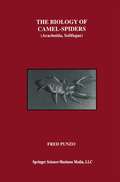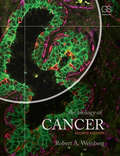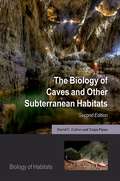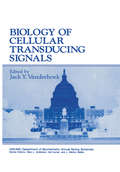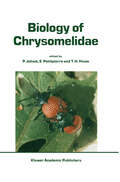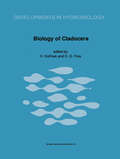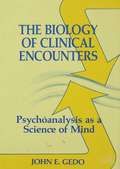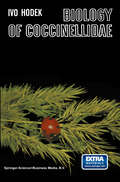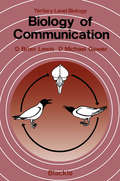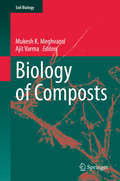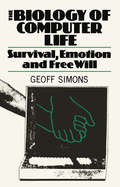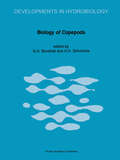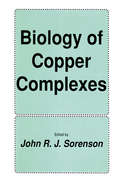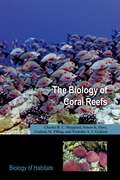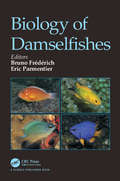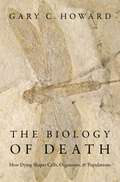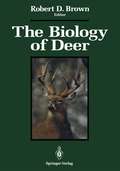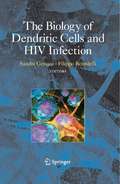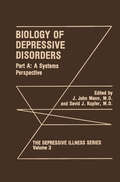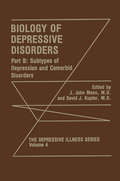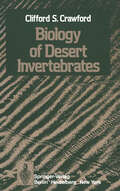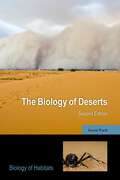- Table View
- List View
The Biology of Camel-Spiders: Arachnida, Solifugae
by Fred PunzoMy initial interest in the Solifugae (camel-spiders) stems from an incident that occurred in the summer of 1986. I was studying the behavioral ecology of spider wasps of the genus Pepsis and their interactions with their large theraphosid (tarantula) spider hosts, in the Chihuahuan Desert near Big Bend National Park, Texas. I was monitoring a particular tarantula burrow one night when I noticed the resident female crawl up into the burrow entrance. Hoping to take some photographs of prey capture, I placed a cricket near the entrance and waited for the spider to pounce. Suddenly, out of the comer of my eye appeared a large, rapidly moving yellowish form which siezed the cricket and quickly ran off with it until it disappeared beneath a nearby mesquite bush. So suddenly and quickly had the sequence of events occurred, that I found myself momentarily startled. With the aid of a headlamp I soon located the intruder, a solifuge, who was already busy at work macerating the insect with its large chelicerae (jaws). When I attempted to nudge it with the edge of my forceps, it quickly moved to another location beneath the bush. When I repeated this maneuver, the solifuge dropped the cricket and lunged at the forceps, gripping them tightly in its jaws, refusing to release them until they were forcefully pulled away.
The Biology of Cancer
by Robert A. Weinberg Robert A WeinbergThoroughly updated and incorporating the most important advances in the fast-growing field of cancer biology, The Biology of Cancer, Second Edition, maintains all of its hallmark features admired by students, instructors, researchers, and clinicians around the world.The Biology of Cancer is a textbook for students studying the molecular and cellula
The Biology of Caves and Other Subterranean Habitats (Biology of Habitats Series)
by David C. Culver Tanja PipanThe second edition of this widely cited textbook continues to provide a concise but comprehensive introduction to cave and subterranean biology, describing this fascinating habitat and its biodiversity. It covers a range of biological processes including ecosystem function, evolution and adaptation, community ecology, biogeography, and conservation. The authors draw on a global range of examples and case studies from both caves and non-cave subterranean habitats. One of the barriers to the study of subterranean biology has been the extraordinarily large number of specialized terms used by researchers; the authors explain these terms clearly and minimize the number that they use. This new edition retains the same 10 chapter structure of the original, but the content has been thoroughly revised and updated throughout to reflect the huge increase in publications concerning subterranean biology over the last decade.
Biology of Cellular Transducing Signals (Gwumc Department of Biochemistry and Molecular Biology Annual Spring Symposia)
by Jack Y. VanderhoekIntercellular communication in multicellular organisms enables cells to respond to environmental changes. Intercellular signal transduction transmitters include hormones, peptide growth factors, neurotransmitters as well as some lipid-soluble mediators. Once signalling molecules are bound to their cell surface receptors, one or more intracellular signals are generated which alter the Qehavior of the target cell. The IXth International Washington Spring Symposium at the George Washington University in Washington, D.C. was organized to assess the current status of the field of signal transduction processes and regulatory mechanisms. The symposium was held on May 8-'.2, 1989 and was attended by more than 1000 scientists from 30 countries. Most of the papers presented at the plenary sessions have been collected in this volume. The first section of this book details the action and regulation of receptors such as ,B-pdr.'nergic receptors and receptors for EGF, insulin, leukotrienes, phosphoinositides and prostaglandins. Section two focuses on the family of guanine nucleotide regulatory proteins (G proteins). These G proteins are known to mediate the coupling of receptor-mediated signals to several intracellular effector systems. Papers are presented describing the intracellular localization of G proteins, the utilization of G protein antibodies, the interaction of G proteins with tubulin and the involvement of G proteins in the regulation of ion channels, adenylate cy~lase and in the activation of neutrophils and T cells. In the third section, several papers describe the second messenger role of phosphoinositides as well as the regulation of phosphoinositide production.
Biology of Chrysomelidae (Series Entomologica #42)
by P. Jolivet E. Petitpierre T. H. HsiaoAs in most groups of insects, scientific research on the Chrysomelidae began in Europe in 1758, with the description of a few genera and species by the Scandinavian entomologists C. von Linne, I.C. Fabricius, and others. As the 19th century dawned, many systematic entomologists took up the study of chrysomelid beetles, together with other groups of beetles, and many new species and genera were described from all parts of the world. This trend has, of course, continued down to the present time. However, researches on the Chrysomelidae did not remain restricted to systematics, and many new lines of study have been followed, especially in the present century, by workers who have benefitted from the advances made in related fields of pure and applied entomology. Much has been achieved in the study of the Chrysomelidae, as elsewhere, and it is the aim of the present book to provide a summary and guide to these achievements. It is also to be expected that this book will provide a stimulus for further studies on the Chrysomelidae, so that we can anticipate continuing progress in our knowledge and understanding of this group through the endeavours of an ever-increasing number of scientists. I offer my congratulations to all concerned in the preparation of this book and my best wishes for its success.
Biology of Cladocera: Proceedings of the Second International Symposium on Cladocera, Tatranska Lomnica, Czechoslovakia, 13–20 September 1989 (Developments in Hydrobiology #71)
by V. Korínek D. G. FreyProceedings of the Second International Symposium on Cladocera, Tatranska Lomnicá, Czechoslovakia, September 13-20, 1989
The Biology of Clinical Encounters: Psychoanalysis as a Science of Mind
by John E. GedoIn The Biology of Clinical Encounters, Gedo utilizes recent findings in neuroscience and cognitive psychology to elaborate his conception of psychobiology and to consider its implications in clinical analysis. He pursues this challenging undertaking in several directions. He illuminates the way in which psychobiology enters into his hierarchical model of mental functioning, and goes on to examine three clinical syndromes - phobias, obsessions, and affective disturbances - in which biological considerations are particularly important. Of special note are chapters examining the implications of a biological approach for clinical psychoanalysis. Gedo explores the notion of transference that grows out of attentiveness to psychobiological factors, elaborates the concept of therapeutics that follows from looking beyond mental contents, and discusses the problem of assessing clinical evidence produced by analyses informed by a psychobiological orientation. Drawing on his own analytic work of over three decades, he compares analyses conducted with a psychobiological orientation with the outcome of analyses conducted earlier in his career with a more traditional psychological approach. A stimulating introduction to the interpenetration of the biological and the psychological in clinical work, The Biology of Clinical Encounters is quintessential Gedo: scholarly in conception, elegant in tone, provocative in import, and illuminating, always, of fundamental issues about the status of psychoanalysis as a science of mind.
The Biology of Clinical Encounters: Psychoanalysis as a Science of Mind
by John E. GedoIn The Biology of Clinical Encounters, Gedo utilizes recent findings in neuroscience and cognitive psychology to elaborate his conception of psychobiology and to consider its implications in clinical analysis. He pursues this challenging undertaking in several directions. He illuminates the way in which psychobiology enters into his hierarchical model of mental functioning, and goes on to examine three clinical syndromes - phobias, obsessions, and affective disturbances - in which biological considerations are particularly important. Of special note are chapters examining the implications of a biological approach for clinical psychoanalysis. Gedo explores the notion of transference that grows out of attentiveness to psychobiological factors, elaborates the concept of therapeutics that follows from looking beyond mental contents, and discusses the problem of assessing clinical evidence produced by analyses informed by a psychobiological orientation. Drawing on his own analytic work of over three decades, he compares analyses conducted with a psychobiological orientation with the outcome of analyses conducted earlier in his career with a more traditional psychological approach. A stimulating introduction to the interpenetration of the biological and the psychological in clinical work, The Biology of Clinical Encounters is quintessential Gedo: scholarly in conception, elegant in tone, provocative in import, and illuminating, always, of fundamental issues about the status of psychoanalysis as a science of mind.
Biology of Coccinellidae
by Ivo HodekThis book provides the first monograph of Coccinellidae. Although the group finds inclusion both in Clausen's (1940) "Entomophagous Insects" and in Balduf's (1935) "Entomophagous Coleoptera", reference in these works is limited to three and twenty pages respectively. Moreover, the last thirty years since these books appeared have ~een a great deal of work on the group. The use of insecticides largely destroyed the early attempts at biological control and interest remained low for as long as insecticides appeared quite successfuL However, the problems of insecticides soon became apparent, and in the last decade there have been tremendous developments in biological control, particularly in eombin
Biology of Communication (Tertiary Level Biology)
by D. Brian. LewisTHE STUDY OF ANIMAL COMMUNICATION HAS TRADITIONALLY FORMED AN important part of the study of animal behaviour. In recent years it has tended to become a sub-field in its own right, attracting workers of varied interests; it is also receiving increasing attention at the undergraduate level. Another recent development is an area which has come to be known as neuroethology. The problem for the neuroethologist is that much of behaviour is not reliable or "reflex-like" in its expression. Communicative behaviour, on the other hand, often is, and here neurophysiology can make a significant contribution to our understanding of the underlying mechanisms. Some excellent texts on animal communication are available, as are collected essays on the neural substrates of specific behaviour patterns, but none of these provides a broad synthesis of concepts in neuro physiology and behaviour. The aim of this book is to draw attention to those areas where neurophysiology is relevant to the behaviourist. The book is not an introduction to animal behaviour or neurophysiology; some prior knowledge of these fields is assumed. It is the integration of these fields that we have attempted.
Biology of Composts (Soil Biology #58)
by Mukesh K. Meghvansi Ajit VarmaThis book highlights the latest findings on fundamental aspects of composting, the interaction of various microorganisms, and the underlying mechanisms. In addition to addressing modern tools and techniques used for composting research, it provides an overview of potential composting applications in both agriculture and environmental reclamation.Composting is the process of organic waste decomposition, mediated by microorganisms. The end-product is called ‘compost’ and can be used as a supplement to improve soil fertility. As the municipal waste generated in most developing countries contains a substantial amount of organic matter suitable for composting, this technology offers a win-win opportunity for stakeholders in terms of disposing of organic waste and providing organic fertilizers for agriculture. In addition, using compost reduces the dependency on harmful chemical fertilizers, and represents a sustainable and environmentally friendly alternative.
The Biology of Computer Life: Survival, Emotion and Free Will
by SIMONSThe doctrine of computer life is not congenial to many people. Often they have not thought in any depth about the idea, and it necessarily disturbs their psychological and intellectual frame of reference: it forces a reappraisal of what it is to be alive, what it is to be human, and whether there are profound, yet un expected, implications in the development of modern com puters. There is abundant evidence to suggest that we are wit nessing the emergence of a vast new family of life-forms on earth, organisms that are not based on the familiar metabolic chemistries yet whose manifest 'life credentials' are accumulating year by year. It is a mistake to regard biology as a closed science, with arbitrarily limited categories; and we should agree with Jacob (1974) who observed that 'Contrary to what is imagined, biology is not a unified science'. Biology is essentially concerned with living things, and we should be reluctant to assume that at anyone time our concept and understanding of life are complete and incapable of further refinement. And it seems clear that much of the continuing refinement of biological categories will be stimulated by advances in systems theory, and in particular by those advances that relate to the rapidly expanding world of computing and robotics. We should also remember what Pant in (1968) said in a different context: 'the biological sciences are unrestricted . . . and their investigator must be prepared to follow their problems into any other science whatsoever.
Biology of Copepods: Proceedings of the Third International Conference on Copepoda (Developments in Hydrobiology #47)
by Geoffrey Boxshall H. K. SchminkeThis volume contains the Proceedings of the Third International Conference on Copepoda, held at the British Museum (Natural History) in London during August 1987. The central theme of the conference was the biology of marine planktonic copepods, although the scientific programme was extremely varied reflecting the wide range of life styles adopted by copepods. The three invited symposia held during the conference focussed attention on particular topical areas of research within the field of marine plankton, and also provided reviews of chosen aspects of copepod biology. These symposia were highly successful. The papers they contained were both informative and stimulating and they bring to this volume a lasting significance. Each symposium was organised by its chairman; Bruce Frost (University of Washington) decided on the balance of topics, selected the speakers and introduced the session on 'The biology and taxonomy of Calanus', Roger Harris (Marine Biological Association) performed the same vital role for 'Experimental studies: rate processes in field populations of planktonic copepods', and Howard Roe (Institute of Oceanographic Sciences) for 'Oceanic and deep-sea copepods'. The impact of these papers will be much enhanced by the large number of high quality contributed and poster papers on marine plankton and by the invited review of 'Copepod luminescence' by Peter Herring (Institute of Oceano graphic Sciences). The fascinating review of 'Copepod eyes' by Mike Land FRS (University of Sussex) is not published here.
Biology of Copper Complexes (Experimental Biology and Medicine #16)
by John R. SorensonIn 1928, it was discovered that copper was essential for normal human metabolism. Ten years later, 1938, it was observed that patients with rheumatoid arthritis had a higher than normal serum copper concentration, which returned to normal wi th remission of this disease. Thirteen years later, it was found that copper complexes were effective in treating arthritic diseaseS. The first report that copper complexes had antiinflammatory activity in an animal model of in flammation appeared twenty-two years after the discovery of essen tiality. In 1976, it was suggested that the active forms of the anti arthritic drugs are their copper complexes formed in vivo. This suggestion was confirmed and extended in the interim with over 1000 recent publications, and many of these were addressed in the proceed ings of our first symposium, published in 1982. The present symposium was organized to present new normal physiological, nutritional, and biochemical aspects of essential metal loelement metabolism as well as variations in metabolism associated with disease states. In addition new data concerning antimicrobial, antiinflammatory, antiulcer, anticancer, anticarcinogenic, analgesic, and radioprotectant activities of copper complexes were presented. These activities are consistent with the notion that they represent the facilitation of normal copper-dependent metabolic processes in dis ease states. The presentations and interactive discussions that fol lowed are contained in these proceedings. John R. J. Sorenson Dedication These proceedings are dedicated to those who made this truly memorable scientific and social Arkansas experience possible.
The Biology of Coral Reefs (Biology of Habitats Series)
by Charles Sheppard Simon Davy Graham Pilling Nicholas GrahamCoral reefs represent the most spectacular and diverse marine ecosystem on the planet as well as a critical source of income for millions of people. However, the combined effects of human activity have led to a rapid decline in the health of reefs worldwide, with many now facing complete destruction. Their world-wide deterioration and over-exploitation has continued and even accelerated in many areas since the publication of the first edition in 2009. At the same time, there has been a near doubling in the number of scientific papers that have been written in this short time about coral reef biology and the ability to acclimate to ocean warming and acidification. This new edition has been thoroughly revised and updated, incorporating the significant increase in knowledge gained over the last decade whilst retaining the book's focus as a concise and affordable overview of the field. The Biology of Coral Reefs provides an integrated overview of the function, physiology, ecology, and behaviour of coral reef organisms. Each chapter is enriched with a selection of 'boxes' on specific aspects written by internationally recognised experts. As with other books in the Biology of Habitats Series, the emphasis in this book is on the organisms that dominate this marine environment although pollution, conservation, climate change, and experimental aspects are also included. Indeed, particular emphasis is placed on conservation and management due to the habitat's critically endangered status. A global range of examples is employed which gives the book international relevance.
Biology of Damselfishes
by Bruno Frédérich Prof. Eric ParmentierDamselfishes (Pomacentridae) are highly conspicuous, diurnal inhabitants of mainly reef areas, capturing the attention of many scientists. Their high diversity and the many interesting characteristics dealing with their way of life (sound production, breeding biology, sex change, farming and gregarious behavior, settlement, diet, habitat) easily explain how this group is continually kept in the limelight and is the subject of numerous studies. This book gathers the data dealing with damselfish morphology, physiology, behavior, ecology and phylogeny.It contains 14 chapters written by renowned scientists.
Biology of Damselfishes
by Eric Parmentier Bruno FrédérichDamselfishes (Pomacentridae) are highly conspicuous, diurnal inhabitants of mainly reef areas, capturing the attention of many scientists. Their high diversity and the many interesting characteristics dealing with their way of life (sound production, breeding biology, sex change, farming and gregarious behavior, settlement, diet, habitat) easily explain how this group is continually kept in the limelight and is the subject of numerous studies. This book gathers the data dealing with damselfish morphology, physiology, behavior, ecology and phylogeny.It contains 14 chapters written by renowned scientists.
The Biology of Death: How Dying Shapes Cells, Organisms, and Populations
by Gary C. HowardHow does death help us understand the living? Death is more than the last event of life; it is interwoven into our growth, development, protection against disease, and more. It influences the direction of entire species via the cycle of a lifespan, and it involves asking many fascinating questions. How do we differentiate between life and death, though? How do we know when a person, animal, or cell is really dead? How much grey area is there in the science? Why do we age? Can we do anything about it? Scientifically, there's much we can learn about a living thing from its cells. In all living things, cells seem to carry "death" gene programs. Some living organisms have created systems to use these to their own advantage. Humans, for example, use the death of specific cells to hone our immune system and to give us fingernails and hair. Perhaps the most dramatic use occurs during the metamorphosis of insects and frogs. Even single-celled organisms use "quorum sensing" to eliminate some cells to ensure the overall survival of their colony in harsh environments. Thus, there is more to death than just dying. This latest book from science writer Gary C. Howard ties together the many ways that death helps us understand life. He synthesizes the involvement and relation of cells, tissues, organisms, and populations, explaining what happens at the end of life. Between discussions about popular topics such as the ethics of extending life and cell regeneration, Howard also answers fascinating questions about life and death. The resulting book examines how the end of life is determined and what we can learn from this process.
The Biology of Death: How Dying Shapes Cells, Organisms, and Populations
by Gary C. HowardHow does death help us understand the living? Death is more than the last event of life; it is interwoven into our growth, development, protection against disease, and more. It influences the direction of entire species via the cycle of a lifespan, and it involves asking many fascinating questions. How do we differentiate between life and death, though? How do we know when a person, animal, or cell is really dead? How much grey area is there in the science? Why do we age? Can we do anything about it? Scientifically, there's much we can learn about a living thing from its cells. In all living things, cells seem to carry "death" gene programs. Some living organisms have created systems to use these to their own advantage. Humans, for example, use the death of specific cells to hone our immune system and to give us fingernails and hair. Perhaps the most dramatic use occurs during the metamorphosis of insects and frogs. Even single-celled organisms use "quorum sensing" to eliminate some cells to ensure the overall survival of their colony in harsh environments. Thus, there is more to death than just dying. This latest book from science writer Gary C. Howard ties together the many ways that death helps us understand life. He synthesizes the involvement and relation of cells, tissues, organisms, and populations, explaining what happens at the end of life. Between discussions about popular topics such as the ethics of extending life and cell regeneration, Howard also answers fascinating questions about life and death. The resulting book examines how the end of life is determined and what we can learn from this process.
The Biology of Deer
by Robert D. BrownThe first International Conference on the Biology of Deer Production was held at Dunedin, New Zealand in 1983. That meeting provided, for the first time, a forum for those with interests in either wild deer management or farmed deer production to come together. Scientists, wild deer managers, domestic deer farmers, veterinarians, venison and antler product producers, and others were able to discuss common problems and to share their knowledge and experience. The relationships formed at that meeting, and the information amassed in the resulting Proceedings, sparked new endeavors in cervid research, management, and production. A great deal has taken place in the world of deer biology since 1983. Wild deer populations, although ever increasing in many areas of the world, face new hazards of habitat loss, environmental contamination, and overexploitation. Some species are closer to extinction than ever. Game managers often face political as well as biological challenges. Many more deer are now on farms, leading to greater concerns about disease control and increased needs for husbandry information. Researchers have accumulated considerable new in formation, some of it in areas such as biochemical genetics, not discussed in 1983.
The Biology of Dendritic Cells and HIV Infection
by Sandra Gessani Filippo BelardelliDendritic cells play the most vital part in inducing anti-viral immune responses in HIV and AIDS among many other viruses. Research on dendritic cells (DCs) is emerging as a fundamental aspect for the comprehension of the mechanisms underlying the pathogenesis of viral diseases. This volume focuses on the role of DCs in the pathogenesis and immunity of HIV-1 infection. It is the only comprehensive volume on pathogenesis and immunity of Dendritic Cells that also focuses on HIV.
Biology of Depressive Disorders. Part A: A Systems Perspective (The Depressive Illness Series #3)
by David J. Kupfer J. JohnMannThis volume is the third in a series on depressive illness. The first volume, entitled Phenomenology of Depressive Illness, is devoted to a de scription of depressive illness from a variety of perspectives that include those of the patient, the clinician, and the psychiatric researcher. It de scribes the major subtypes of depressive illness and places them in the context of the life cycle. The second volume in this series is entitled Models of Depres sive Disorders: Psychological, Biological, and Genetic Perspectives. This volume describes several major models of depressive disorders, in cluding genetic, cognitive, interpersonal, intrapsychic, and neurobio logical models. The third and fourth volumes deal with the biology of affective disorders in detail. These volumes are distinguished by a triaxial ap proach. In Volume III the biology of affective disorders is described from the perspective of individual transmitter systems and neurophysi ologic and biologic processes. In Volume IV the biology of depression is addressed from the vantage point of symptom components of de pression, and similarities and differences in the biology of depression are described compared to other psychiatric disorders with clinically overlapping features such as anxiety disorders or eating disorders. The effects on biology of comorbid conditions such as anxiety, personal ity disorders, alcoholism, and eating disorders are reviewed. These ap proaches incorporate issues of state versus trait.
Biology of Depressive Disorders. Part B: Subtypes of Depression and Comorbid Disorders (The Depressive Illness Series #4)
by J. John Mann David J. KupferBiology of Desert Invertebrates
by C. S. CrawfordWhat little we know of the biology of desert invertebrates stems largely from inferences based on intensive and repeated observations. Such informa tion is not gained easily, since despite the actual abundance of these animals, relatively few of them are ever seen. In fact, except for species impacting on the well-being of human populations, historically most have been ignored by scholars in the western world. Indeed, it was ancient Egypt, with its reverence for the symbolism of the scarab, that probably provided us with the clearest early record of prominent desert types. A more modest resurgence of the story had to wait until the arrival of the present century. To be sure, some of the more obvious species had by then been elevated by European collectors to the level of drawing-room curios ities, and expeditions had returned large numbers to museums. But by 1900 the task of describing desert species and relationships among them was still in its infancy; and as for careful natural history studies, they too were just coming into their own.
The Biology of Deserts (Biology of Habitats Series)
by David WardThis book offers a concise but comprehensive introduction to desert ecology and adopts a strong evolutionary focus. As with other titles in the Biology of Habitats Series, the emphasis in the book is on the organisms that dominate this harsh environment, although theoretical and experimental aspects are also discussed. In this updated second edition, there is a greater focus on the effects of climate change and some of its likely effects on deserts, seeing desertification as among the most serious results of climate change, leading ultimately to the increasing size of arid and semi-arid regions. The Biology of Deserts Second Edition includes a wide range of ecological and evolutionary issues including morphological and physiological adaptations of desert plants and animals, species interactions, the importance of predation and parasitism, food webs, biodiversity, and conservation. It features a balance of plant and animal (both invertebrate and vertebrate) examples, and also emphasizes topical applied issues such as desertification and invasive species. The book concludes by considering the positive aspects of desert conservation. This accessible textbook is intended for senior undergraduate and graduate students, as well as professional ecologists, conservation practitioners, and resource managers working in the field of desert ecology.
